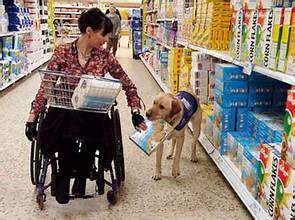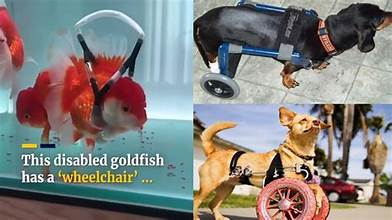A clear, compassionate guide for families, individuals with disabilities, and animal lovers
🐶 What Is a Service Animal?
A service animal is a dog (or, in some cases, a miniature horse). Trained to perform specific tasks for a person with a physical, psychiatric, intellectual, or sensory disability.

Examples of tasks include:
- Guiding a person who is blind
- Alerting a person with diabetes to low blood sugar
- Calming a person with PTSD during a panic attack
- Retrieving items for someone with limited mobility
Legal Protection:
The Americans with Disabilities Act (ADA) protects service animals and allows them.

- In public places (stores, restaurants, transportation)
- To live in housing that typically doesn’t allow pets
- Go into workplaces (depending on accommodation rules)
Training Required:
Service animals undergo specialized, task-based training. They must be well-behaved, obedient, and calm in public settings.
🐾 What Is an Emotional Support Animal (ESA)?
An emotional support animal (ESA) offers comfort and companionship to individuals struggling with mental health challenges such as anxiety, depression, PTSD, or panic disorders.

ESAs are not required to perform specific tasks. Their presence alone helps provide emotional stability and support.
Legal Protection (Limited):
ESAs are covered under the Fair Housing Act, meaning:
- You can live with your ESA in “no-pet” housing
- Landlords must make reasonable accommodations.
⚠️ No Access to Public Places:
Unlike service animals, ESAs are not allowed in restaurants, stores, airplanes (as of 2021), or other public spaces that don’t allow pets.
Letter Required:
Registering an ESA requires a letter from a licensed mental health professional stating your need for emotional support.
🆚 Key Differences at a Glance
| Feature | Service Animal | Emotional Support Animal |
| Species Allowed | Dogs (some horses) | Any animal |
| Training Required | Task-specific training | No formal training |
| Legal Access to Public Places | Yes (ADA) | No |
| Protected in Housing | Yes | Yes |
| Can Fly on Airplanes | No (since 2021) | No |
| Provides Emotional Support | Indirectly, via tasks | Yes |
| Performs Physical or Psychiatric Tasks | Yes | No |
👥 Who Needs a Service Animal vs. an ESA?
A service animal is best suited for individuals who need help with:
- Navigating physical spaces
- Handling medical alerts (e.g., seizures, low blood sugar)
- Performing physical tasks like opening doors or carrying items
- Calming during psychiatric emergencies
An ESA is ideal for people who:
- Struggle with depression, anxiety, or PTSD
- Benefit emotionally from the presence of an animal.
- Want a companion animal that helps relieve stress at home?
📝 How to Get an ESA or Service Animal
For a Service Animal:
- Get a formal diagnosis from your doctor
- Work with a professional trainer or a service dog organization.
- Choose a dog with the right temperament and ability.
- Practice long-term training, socialization, and public exposure.
For an ESA:
- Speak with a licensed mental health professional
- Obtain a signed ESA letter stating your nee.d
- Choose an animal that is safe, well-behaved, and comforting.
- Provide basic obedience training (highly recommended)
❤️ Why It Matters
Many people confuse ESAs with service dogs, creating challenges for those who genuinely need support. Understanding the differences helps:
- Protect people’s rights
- Promote responsible animal ownership.
- Encourage compassion and inclusiveness.n




